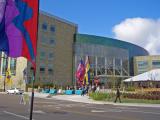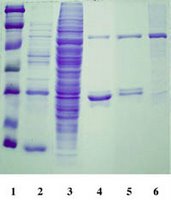Fludarabine.
There is an old Gary Larson cartoon entitled “What we say to cats,” in which the first frame shows a woman talking to her cat. The second frame is called “What cats hear” and the cartoon bubble coming out of the cat’s head is a complete blank.
For a few moments anyway, that scene was repeated at UC San Diego’s Moores Cancer Center, as Marilyn and I sat, dumbstruck, on hard plastic chairs with our backs to the wall.
In retrospect, it should not have been a surprise. As Dr. Castro was quick to point out, fludarabine-based therapy is still the standard treatment for CLL.
“Just looking at you, with some good-sized lymph nodes, I think the time has come where we would probably need to incorporate some reatments that use fludarabine,” Castro said
He sees little merit in Rituxan alone, which I have had three times, as readers of this blog know.
“Personally, I never treat anybody with single-agent rituximab," Castro wen
 t on. “I think it’s not enough. With somebody as young as you are, with no other comorbid medical problems, I think that we should aim a little higher than just kind of letting the disease advance and go without a really good control. You know, you can have a very good response to fludarabine. I rarely or never use fludarabine as a single agent. From the data we have recently published by John Byrd and his group at Ohio State University, we know that fludarabine and rituximab (RF) not only obtain a better, total response, maybe a complete response, but also prolongs survival in patients with CLL. I think at the minimum, you should have fludarabine in combination with rituximab.”
t on. “I think it’s not enough. With somebody as young as you are, with no other comorbid medical problems, I think that we should aim a little higher than just kind of letting the disease advance and go without a really good control. You know, you can have a very good response to fludarabine. I rarely or never use fludarabine as a single agent. From the data we have recently published by John Byrd and his group at Ohio State University, we know that fludarabine and rituximab (RF) not only obtain a better, total response, maybe a complete response, but also prolongs survival in patients with CLL. I think at the minimum, you should have fludarabine in combination with rituximab.”It could give me a remission of two to four years, he added. We could consider following it with Campath consolidation, meaning that the monoclonal antibody could be used to (hopefully) eliminate most of the residual minimum residual disease.
Castro thumbed through my medical records. He noted that my absolute lymphocyte count had doubled in less than six months, which, in addition to extensive lymphadenopathy, is another NCI Working Group guideline for treatment. As any good doctor should, Castro follows those guidelines.
“For treatment of CLL we have some guidelines,” he explained. “We treat when the white cell count is rapidly growing and the doubling time is less than six months. We treat when there is anemia or low platelet count or when there are overwhelming symptoms, and you don’t have those. Or we treat when patients have a liver or a spleen that is enlarged. You have a spleen that is about 4 cm below the costal margin and that’s probably creating a little bit of that heaviness, that kind of sensation. But it’s not a huge spleen that I’d say we have to treat you right away for that reason.”
While it is true that my ALC has doubled, it is coming back from my Rituxan treatment in December, which knocked it to within a point of normal. Based on what has happened in the past after other Rituxan treatments, it will probably progress, plateau somewhere between 70,000 and 100,000, and dither around, climbing slowly, probably not doubling again within six months. That’s just a guess, though. As we all know, in CLL things can change. And at any rate, I cannot argue with the fact that I’ve got too many swollen nodes, and therefore that I will need treatment pretty soon.
Filling in the bubble
It was time, finally, for the cat to speak. I expressed my reservations about fludarabine, the same ones I have written about in the blog: Fludarabine, when it comes to potential immune problems, is like Russian Roulette. I am Coombs positive and wish to avoid autoimmune hemolytic anemia (AIHA). I have a history of squamous cell cancers and immunosuppression from fludarabine has been shown to lead to serious, even fatal, cases of those cancers. Fludarabine also selects
 for 17p-deleted CLL clones, which are the most aggressive and least treatable, and therefore the the last thing a CLL patient needs.
for 17p-deleted CLL clones, which are the most aggressive and least treatable, and therefore the the last thing a CLL patient needs. A followup to the Byrd study that Dr. Castro cited examined median progression-free survival (PFS) of unmutated patients treated with RF. It was 31 months, shorter for those with the 11q deletion, which I have recently acquired.
I wondered about the wisdom of obtaining what might be a fairly short remission from a “big gun,” so to speak -- one that is, perhaps, better saved for a pre-transplant situation, should it come to that. I know that this is not the conventional thinking, but I sometimes find that the conventional thinking does not take the long view. Dr. Byrd also once wrote about treatments for those on whom fludarabine no longer works -- those who become fludarabine-refractory, which means everyone who uses the drug. Frankly, it’s basically all downhill after that point is reached.
“I keep thinking I would rather not do fludarabine unless my back is to the wall,” I told the doctor, inching forward in my chair, “and I’m not sure that I’m at that point.”
Castro chuckled. “I have that impression,” he said. As the conversation went on, he assured me I wasn’t crazy.
“I cannot disagree with you, because those are valid concerns,” he said. “The only thing I need to make clear is that the conventional structure of the treatment of a patient with CLL is based on fludarabine.”
In combination with Rituxan, fludarabine, warts and all, is “the best conventional treatment that we have available, that we know can give you two, three, four years of disease-free survival,” he said.
The unconventional route: R+HDMP
I asked about Rituxan plus High Dose Methylprednisolone, which was studied at UCSD in chemo-naïve patients in 2004. I have corresponded with some patients who have undergone this treatment, without serious incident and with good results.
Prior to the 2004 trial, R+HDMP had been reserved as a salvage therap
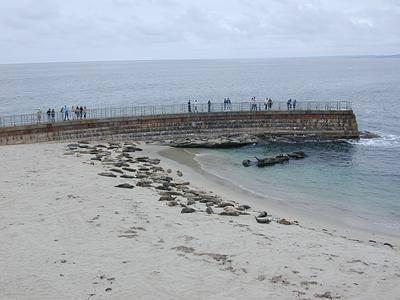 y, something for those who are considered “relapsed and refractory” -- that is, those who have failed fludarabine and who are running low on options. The chemo-naïve protocol used a reduced amount of HDMP compared to that given salvage patients, and UCSD is about to start a new R+HDMP trial for the chemo-naïve that uses more Rituxan than before. UCSD will also be doing a new study of the protocol in salvage patients.
y, something for those who are considered “relapsed and refractory” -- that is, those who have failed fludarabine and who are running low on options. The chemo-naïve protocol used a reduced amount of HDMP compared to that given salvage patients, and UCSD is about to start a new R+HDMP trial for the chemo-naïve that uses more Rituxan than before. UCSD will also be doing a new study of the protocol in salvage patients.“We are expanding the core of patients because we have had such good success with it here,” Castro said.
An abstract was published for the American Society of Hematology meeting last December, summarizing the results of the 2004 trial. In it, Castro and the other authors reported: “Eighty-six percent of the [16] patients had high-risk disease prior to therapy, as per the modified Rai classification. Fifty-six percent of the patients had CLL cells that expressed ZAP-70 and/or unmutated immunoglobulin variable region genes. . . . Objective responses were observed in 14 out of 16 patients (Overall response rate 93%), with 1 patient achieving a complete response (CR) without disease detectable in the marrow, 1 patient achieving a nodular PR, 12 patients obtaining an excellent PR only with minimal residual disease in the bone marrow, and 1 patient having stable disease, as per the NCI-working group criteria. We observed significant reductions in the white blood cell counts, increases in hemoglobin, elevations in platelet counts, and dramatic reduction and resolution in lymphadenopathy and splenomegaly.”
It should be emphasized that this is a small study of barely more than a doz
 en patients at a single insititution. While I believe the treatment has merit -- after all, what’s not to like about watching the nodes melt away and substantially clearing the marrow without risking the dreaded 17p deletion -- it has not been so successful everywhere, as Castro pointed out.
en patients at a single insititution. While I believe the treatment has merit -- after all, what’s not to like about watching the nodes melt away and substantially clearing the marrow without risking the dreaded 17p deletion -- it has not been so successful everywhere, as Castro pointed out.“The main thing is during treatment to have a very strong surveillance in terms of potential infectious problems,” he said. “We had a patient with sinusitis, with pneumonia. Outside our institution we had a patient with a bowel perforation and actually we had some patients that died at a different institution. We have treated about maybe 60 patients total and we have not had any single death or any patient with major complications. It is an immunosuppressive kind of treatment so it is something that is supposed to be monitored.”
While I do not know any further details about the patients who died outside UCSD, it is possible they were in the salvage category, and those folks are always at higher risk of complications and death no matter what treatment they receive.
But the moral of the story is to be careful if you decide to try R+HDMP at home, so to speak. The exclusion criteria for the 2004 study were published at CLL Topics and are worth a review here if you are considering this treatment. Castro noted that UCSD is concerned about diabetes and bone densities, and does testing for that. I have also recently read two different anecdotal reports on patient forums about vision problems.
Nothing is without risk in CLL therapy, of course, and taking intelligent precautions is the key to minimizing complications
A little bit pregnant
It turns out, in Castro’s estimation, that I am a good candidate for R+HDMP -- pretty healthy other than CLL, nothing that would meet the exclusion criteria I mentioned above. The treatment could net me a remission of 1 ½ to 2 years, he said. (Perhaps more if I were to follow it with Campath, as many of the 2004 patients did.)
But I can’t do t
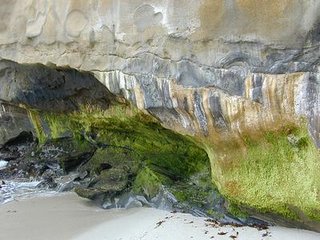 he treatment in a trial at UCSD because I have had Rituxan in the past. This means that I am neither fish nor fowl -- neither chemo-naïve (though I am very close to being so) nor fludarabine- refractory. Every trial at UCSD, including those involving Humax CD 20 and R+AT-101 (Gossypol), is geared toward one or the other. I gather UCSD is not alone in the way these things are set up.
he treatment in a trial at UCSD because I have had Rituxan in the past. This means that I am neither fish nor fowl -- neither chemo-naïve (though I am very close to being so) nor fludarabine- refractory. Every trial at UCSD, including those involving Humax CD 20 and R+AT-101 (Gossypol), is geared toward one or the other. I gather UCSD is not alone in the way these things are set up.“You are going to have problems getting into a clinical study because you are in limbo,” Castro said. “You are not fully pretreated, you have been treated with something but not the best option available, so that is going to create a problem for enrollment in clinical studies.”
Another possibility is to do the protocol outside the trial setting. While it can be done anywhere by downloading the information off the internet, Castro strongly advised that it be done at UCSD, where they are experienced with it.
Were I to do it -- and it is one of the top contenders as far as I am concerned -- I would prefer to do it at UCSD. Convincing my insurance to pay for an out-of-state treatment is another matter.
Conclusions
What I took away from my visit, aside from some photos of the beach at La Jolla that accompany this post, was the following:
In the USA there are certain hurdles on the track of treatment. The FDA has approved three drugs for CLL: chlorambucil, fludarabine, and Campath.
Chlorambucil is dismissed by most of the experts here -- though not in the UK and some other places -- and therefore fludarabine is at the center of standard, formal treatment. Clinical trials are geared largely to those who have had no treatment, or who have failed the standard treatment. Those of us who spend a lot of time on the internet, and who read about the interesting approaches discussed in such places as CLL Topics and Dr. Terry Hamblin's blog, tend to forget that in the real world, it’s still fludarabine, fludarabine, fludarabine.
But there is also a growing sense that the drug is problematic (except, perhaps, at MD Anderson, which seems almost religious in its devotion at times). This wondering aloud can be found in the writings of Byrd, and in the remarks of Castro.
Castro said my concerns about fludarabine “are part of investigational issues at this point.”
“I don’t think we have a clear, final answer about how fludarabine impacts your immune system,” he said “In the long run, it’s going to be a medication that maybe in 20 years we’re going to say: ‘You know, 20 years ago we used to treat patients with fludarabine and that was crazy because that was creating all these problems that we later on discovered, a lot of immunosuppression, all these patients that were turning p53 (17p) deficient and were selecting only a population of cells that were resistant and then it was very hard to get those patients treated.
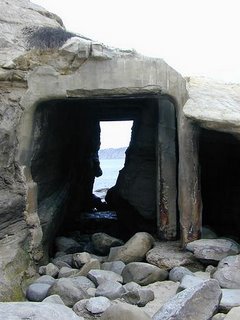 The current data doesn’t show that is the case, but --“
The current data doesn’t show that is the case, but --“I assured the doctor that I understood that when it comes to CLL, as my friend Steve Madden says, the answer is always “We don’t know.”
“I understand how up in the air all of this is,” I said, “and I understand that there are no guarantees no matter what, conventionally or experimentally, in a result or in long-term effect.”
As much as it was important to hear Dr. Castro’s take on my case -- I am glad I made the trip to San Diego -- it was also important for him to hear from a patient who doesn’t believe the standard approach is always the best one. I am not the only one with these concerns, or with this view. The more we in the grassroots push for better options, the faster we are likely to have them.
These better options are likely to come from research at places like UCSD, or Ohio State, which is the next stop on my Summer of Advice Tour.







